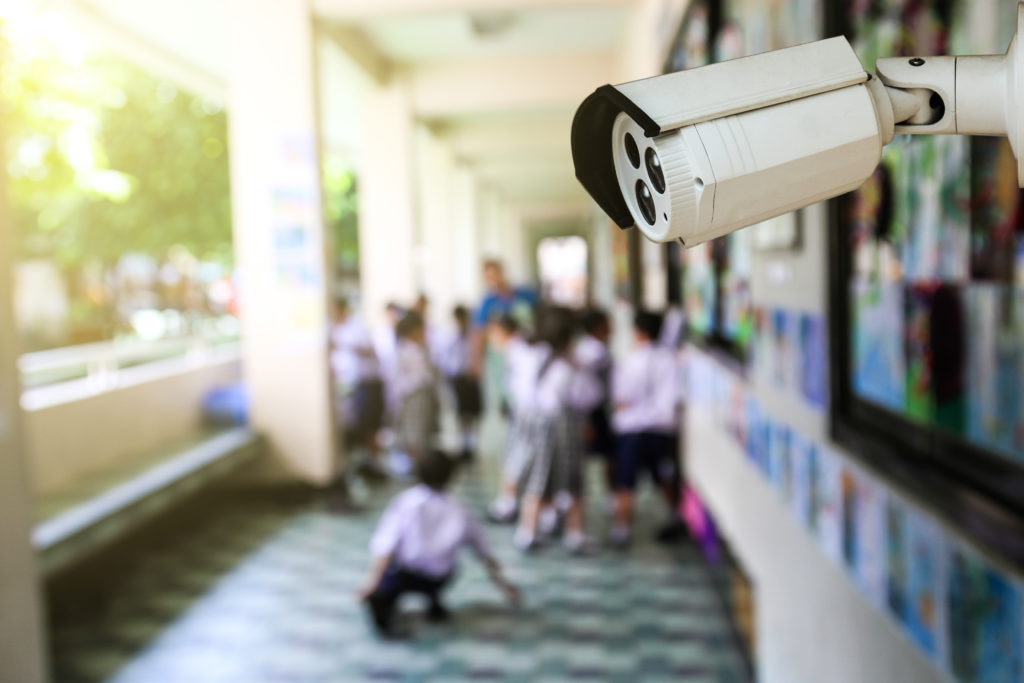
In the wake of the latest school shootings, it’s more important than ever to talk about security in our schools and public spaces, and what the best line of defense is against active shooters. The right security solution can leave us better prepared for crises and emergency situations and keep infrastructure and our communities’ safe during times of crises.
What is an active shooter?
An ‘Active Shooter’ is defined by the U.S. Department of Homeland Security as an individual actively engaged in killing or attempting to kill people in a confined and populated area. In most cases, active shooters use ?rearms, and there is no pattern or method to their selection of victims.
As we have seen several times this year, this tragic yet growing trend is forcing the hand of everyone from school administrators, law enforcement divisions, universities, and businesses to re-evaluate their physical security plans.
The best line of defense
An effective layered security solution can be the best line of defense when it comes to securing our schools, malls, businesses and other public spaces vulnerable to attacks. A comprehensive security solution can provide administrators with real-time surveillance, alerts and the ability to react and protect the community from a crises situation brought on by an active shooter.
The need for physical security
Physical security is defined as measures that are designed to deny access to unauthorized personnel (including attackers or even accidental intruders) from physically accessing a building, facility, resource, or stored information, as well as guidance on how to design structures to resist potentially hostile acts.
It has been studied and determined that 95% of the locations where attacks have occurred were considered soft targets (lacking in physical security and the presence of resistance). Criminals do not want to take extra risks and will often hit the ‘soft targets’ and areas that are the most vulnerable, providing opportunity for them to easily inflict harm with less risk.
Creating a layered security solution
Creating a layered integrated security solution starts with the basics: creating a visual deterrent with a high quality security solution that includes visible cameras, DVR to record video evidence and posted signage, as well as an electronic access control system.
Security cameras should be placed at all vulnerable access points, and access points should be limited to one or two heavily monitored areas. An access control system should be set up to secure entrances, exits and other doors within the facility.
The important role of access control
Access control is a growing trend in physical security and is an ideal security solution for safeguarding schools.
A school entrance may be monitored, but provides little defense after an intended shooter gets past that first entrance point. Access control enables the facility to go in lockdown mode and secure vulnerable access points, creating a barrier that stops the intruder from gaining easy access to the public.
Consider these access control scenarios
Each school employee is issued a proxy card required to get in and out of the building. Doors can only be opened at certain times and by authorized personnel. Teachers can be given designated access to their classrooms allowing students to enter and locking the door after all students have arrived. For anyone to exit, or enter, the teacher must physically use the badge to let them in and out.
An access control system can be used to segment the facility and create lockdown for various zones or the entire facility. Let’s say an active shooter happens to gain access inside a facility. Anyone with designated access rights can easily swipe a red proxy card on a card reader or remotely force the facility into lockdown mode.
Restricting access and creating barriers buys the facility time and protects the inhabitants, buying time until emergency responders are able to arrive. First responders will be granted access with a green proxy card through a designated lockdown door and be able to secure and clear the area and establish a safe evacuation route.
Access control systems can also be used to easily track anyone with a proxy card, identifying how many card holders are in the building. With ActiveX and a synchronized calendar feature, the access control system can also give administrators the ability to keep doors open at set times for school functions, locked during holidays and vacation preventing unwanted access.
Integrating video surveillance with access control
Integrating video surveillance with access control system provides a tactical advantage with visibility to entry/exit points and high traffic areas. Desired areas can be monitored remotely and in real-time to ensure safety and preventing unwanted incidences and also providing insight if an incident were to occur, as it occurs.
A good system will allow officers to monitor activity, movement, and plan accordingly to help reduce further loss and or to de-escalate a situation promptly.
How integrated access control and video surveillance works
Integrated access control and video provides real-time video and the ability to quickly monitor, verify and react to a situation as it happens.
For example, let’s say school district “A” unknowingly allows an active shooter entry into their school, grants them a visitor ID, and buzzes them in and out of the office. A 3D camera above the interior door is in place counting every person in and out of the building, including the shooter. The shooter enters the hallway and starts causing trouble.
Alerted to the incident, a school administrator or designee takes a red ‘emergency’ card and swipes the card on a reader which instantly locks down the building and all access controlled doors (including classrooms), preventing the shooter from gaining further access and trapping them in a ‘holding’ zone.
Emergency response is then initiated. With every classroom door locked down and kids and teachers secured, school administrators can access surveillance video of all access controlled areas and relay real-time information over the phone to dispatchers and responding personal. While this is happening, police and emergency responders can also access the surveillance video to observe the shooter’s location and behavior, before and while moving in to neutralize the threat.
With the suspect trapped inside a holding zone, and the school on lockdown, responders are no longer focused on dividing forces to quickly and rapidly search a larger area. Instead they can focus on a smaller holding zone area, neutralize the threat and remove the shooter from the premises.
After the location is secured and the situation resolved, the recorded video of the incident can be quickly and easily extracted, submitted as evidence for prosecution, and used to conclude the investigation.
Preparation is the key to success
Recent active shooter events in schools, movie theaters and workplaces have created a high demand for a security solution that helps prepare these types of facilities for crises situations and protects the public. Having a layered security solution with a fully integrated video surveillance and access control system is critical for success.
These types of events can happen anywhere at any time, and the only way to secure facilities and offer protection for inhabitants is to have an integrated solution in place and a pre-conceived plan of action.
{{widget type=”cms/widget_block” template=”cms/widget/static_block/default.phtml” block_id=”110




About The Author: Supercircuits Team
More posts by Supercircuits Team